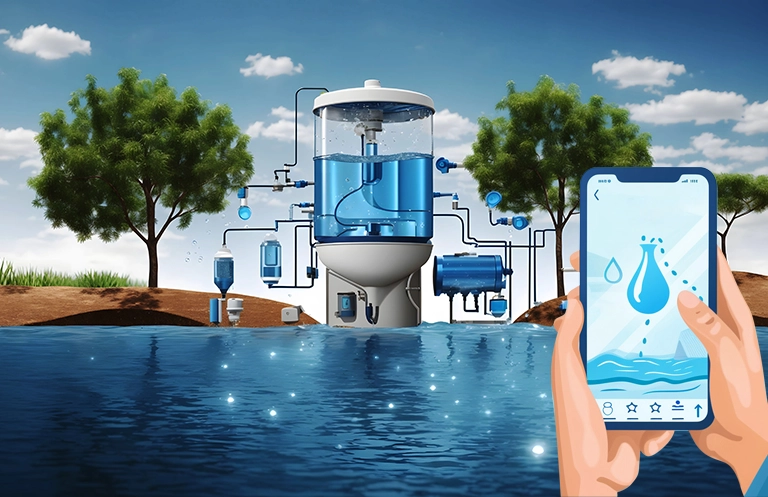Heavy equipment is mainly used extensively in industries such as construction, oil and gas, mining, forestry, energy, civil engineering, military engineering, transportation, and many others. Industrial heavy machines include construction equipment, wheel loaders, oilfield pieces, manufacturing equipment, earthmovers, hydraulic cranes, bulldozers, oversized trucks, forklifts, and more. Organizations rely on heavy machinery to speed up production and to avoid human errors or health risks.
With developments in IoT, it is possible to decrease equipment downtime while improving the efficiency of the output. Companies that supply industrial machinery and components are seeing strong interest in connected machinery and components with IoT integration. IoT-powered asset management solutions offer a host of benefits, including predictive maintenance to prevent equipment failure, increased asset reliability, improved asset health, accident avoidance in the workplace, and downtime reduction.
Smart Asset Monitoring with IoT
Safety of personnel and assets, theft or pilferage of assets, accidents and resulting injuries, and bottlenecks in the supply chain are some of the common challenges that are prevalent in asset-intensive industries like manufacturing, utilities, construction. By improving visibility into day-to-day operations, replacing legacy systems with an integrated solution and automating manual processes, many of these challenges can be overcome.
Digitalization, combining connected devices with IoT-based solutions, can help to overcome these issues. End-to-end clarity on the status of the equipment enables improved decision-making, increases asset reliability, and also improves the people and process efficiency. With the advances in technology, mature organizations have heavy machinery that is computerized, automated and enabled with connectivity and big data analytics, which increases the efficiency of the overall product development process.
Use cases: IoT in heavy machinery management
Let’s take a look at some of the use cases where IoT is transforming the way heavy equipment and related assets are managed.
Smart heavy equipment in warehouse management
Material handling equipment like trucks, forklifts, pallet trucks, and pump trucks are very important for any warehouse to perform daily activities such as loading, unloading, transporting goods to different areas, and picking goods from risky areas. Needless to say, these machines and their operators need to be managed properly to minimize the chances of accidents. Warehouse operators need to take preventive measures for vehicle accidents and injuries that occur while from shifting material, and take proper care while handling hazardous materials.
Today, futuristic warehouses are using driverless robotic equipment to assist in picking and moving operations. Guidance systems like global positioning system (GPS), lasers, and radio-frequency identification (RFID) are used in such warehouses and equipment.
For example, advanced driverless pallet trucks and forklifts are equipped with audible warnings and lights and have built-in sensors to detect obstructions. These sensors come with lasers or camera systems, which are positioned to detect objects and activity from the floor and are able to determine the height and distance around all sides of vehicles and warehouse corners. This makes the equipment intelligent – it knows when to slow down and stop to avoid a collision.
With the recent advances in IoT for warehouse equipment, the market has a new breed of smart forklifts that come equipped with 360-degree detection forklift antenna, which is able to detect when the workers come into forklift zone. When a worker is detected within the predefined danger zone, audio and visual alarms are set off inside the forklift cab to alert the driver. This helps to reduce the risk of injuries and property damage.
Smart heavy equipment in the construction sector
According to a MarketandMarkets report, the heavy construction equipment market size is estimated to grow from USD 121.46 Billion in 2015 to USD 180.66 Billion by 2020, at a CAGR of 7.0%. Depending on the construction application, heavy machines are mainly categorized into four types:
- Earth moving equipment
- Construction vehicles
- Material handling equipment
- Construction equipment
Wireless technology has a huge impact on the construction industry to provide connectivity for heavy equipment. These machines use technology-enabled devices combined with cloud computing, allowing storage and sharing of data.
IoT is playing a key role in boosting productivity, improving preventive maintenance, minimizing downtime, and reducing repair costs. Sensors integrated with the equipment are able to detect and send automated alerts related to the status of the equipment systems and parts. They can also compile and analyze usage and maintenance data, helping with preventive and predictive maintenance.
One of the major problems in the construction industry are injuries caused due to accidents involving people and heavy equipment. As the number of heavy equipment continues to rise, the risk also increases. IoT can help to make the equipment smarter and safer.
Additionally, IoT can help to track assets as they move around the site, or to a different site, ensuring that the assets are never stolen or lost – an ongoing issue on large construction sites that causes delays and decreases productivity.
Smart heavy equipment in transport and logistics
Transportation and logistics businesses want to optimize the supply chain. Many transportation companies are already using mobile devices, such as barcode scanners, mobile computing devices, and radio frequency identification (RFID) to solve challenges related to the supply chain. With RFID, many companies are achieving a high level of shipping and receiving accuracy, inventory accuracy, and faster order processing, along with a reduction in labor costs.
However, due to drivers’ careless behavior while driving heavy trucks or conveyors, company owners have to shell out a big amount for accident-related injuries, material loss or shipping delays. By using advanced technology that is capable of monitoring driver’s behavior and delivering alerts in case of possible collisions, the risk of these issues can be minimized.
Computer vision-based techniques and ADAS solutions, with a number of onboard sensors, can help with lane detection, traffic signal detection, driver behavior detection, GPS tracking, fuel management, report generation, notification alert, and predictive maintenance.
Using such solutions, the driver receives support to detect and avoid accidents. It is also possible to monitor a driver operating a heavy machine and automatic alerts can be generated if the driver is sleepy or inactive for a long duration.
Another effective solution for tracking of heavy machines/vehicles is based on installing GPS fleet tracking devices on the vehicles to gain real-time data updates. This is an efficient and secure solution that helps to resolve issues related to operational inefficiencies, theft, and fleet maintenance, increasing the overall productivity of the machines and vehicles.
eInfochips helps large organizations to develop engineering and analytical solutions for industrial automation projects. We also have expertise in developing server-based performance analytics and predictive maintenance solutions using engineering design data, logs, and records. Our fleet management solutions and advanced IoT solutions are designed to help organizations achieve their digital transformation goals. For details on how we can help you, contact us.












